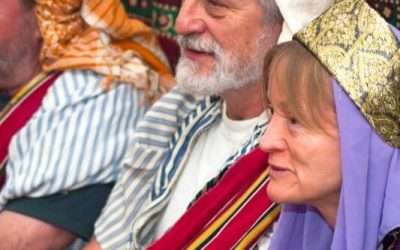In 2018, Mission Frontiers introduced the sub-classification of unreached people groups called Frontier People Groups (FPGs).1 The idea underlying FPGs is they lack the seed to see the Christian community flourish and multiply. The gospel has not been planted, nor any indigenous Christian community exists among them. Without outside help, these people groups will likely never hear the Good News of Christ. The FPGs highlight one of the most strategic areas to mobilize cross-cultural workers. This article will define Frontier People Groups, introduce common challenges and opportunities, and explore the possibility of seeing Frontier People Groups reached through diaspora in global cities.
An FPG has no evidence of a gospel movement, less than 0.1% or less Christian of any kind, and an unmet need for pioneer work from the outside. There are currently 4,977 FPGs globally.2 These people groups make up twenty-five percent of the world’s population. There are various barriers to seeing movements among FPGs. First, many FPGs live in geographic areas that are difficult to access. Ninety percent of all FPGs live in the 10/40 window. The 10/40 window is an area of significant unreached populations that fall between ten and forty degrees of latitude across the Middle East, North Africa, and Asia.
Second, many churches and organizations seek to partner with local churches or leaders for ministry partnerships. There are no churches or leaders among FPGs. Therefore, it leaves fewer resources available for mobilization to FPGs. In pioneering work, there are no current opportunities to connect. Churches and organizations must be willing to pioneer among new peoples and places.
Lastly, FPGs have spiritual strongholds that keep them unreached. FPGs have lived generations of false worship. They are blind and deceived by their system of religion. It will take the move of God’s Spirit to break down strongholds, give them eyes, and bring them to Himself.
However, the biggest reason they are unreached is that not enough gospel workers and resources are allocated for their evangelization. Yes, it will be a sovereign work of God that brings FPGs into the Kingdom, but God has displayed His joy in using the human agent in the salvation of people. Only one percent of field missionaries are working to reach FPG, which makes up twenty-five percent of the world’s population. That is the equivalent of one missionary for every 450,000 people among FPGs. They have virtually no access to the gospel, the Bible, or a Christian.
So how can we reconcile suggesting allocating missionaries and resources among the diaspora in North America if FPGs are of high strategic value? There are FPGs with significant numbers in North American cities. Based on the research using JoshuaProject.net and the UPG North America priority matrix, there are at least 25 FPGs in North America with a population of over 5,000 in one city.
The number of Frontier people groups in North America is more than twenty-five. UPG North America often classifies people groups in a broader context in the diaspora that is difficult to directly connect to an individual people group in their home country. For example, there are thousands of South Asian people groups, but in the diaspora, their identity grows wider to be a cluster based on language and religion. Gujarati in North America identifies around language and religion. Yet, there are hundreds of Gujarati-speaking people groups that live in India. This research excluded these types of people group entries. Furthermore, only groups that are FPGs in countries where they are indigenous are included. For example, this does not include Somalis because, in Somalia, they are not considered an FPG, even though Somalis in the United States are still considered an FPG. 3
Engaging FPGs in North America avoids some of the barriers to evangelism in their home country. First, access is wide open. There are no governmental restrictions and little to no threat of physical harm. Second, local churches can adopt and engage an FPG that lives in their city. Third, engaging an FPG in North America allows workers to develop skills, language, and cultural understanding to continue to pursue church planting among an FPG in their home country if access opens. Fourth, people are more open to new ideas during transition, such as moving to a new country. Lastly, because of technology and media, the gospel can spread from FPGs in North America to their own people across the globe and not be limited to geography.
Likewise, there are unique challenges present in North America. First, it is a temptation to extract a new believer from their culture into a culturally foreign expression of worship. Second, there are smaller communities that limit the gospel’s spread locally and are a challenge to seeing local healthy indigenous churches in the diaspora. Third, the significant populations of FPGs are in urban areas. Traditionally, people movements to Christ have had significant barriers in urban areas and among urban peoples. Furthermore, in some instances, the people group’s identity and homogeneity reduce in the diaspora. Historically, homogeneity in a community helps the rapid spread of the gospel. In the diaspora, people groups often adopt a hybrid identity after a few years. 4
Here are introductions to five Frontier People Groups in North America that you and your church can begin praying for, mobilizing toward, and sharing with.
Bosniaks
- Country of primary origin: Bosnia and Herzegovina
- Global Population: 3,124,400
- Population in North America: 350,000
- Percentage of the total population in North America: 11.2%
- Major cities with significant populations: St. Louis, Chicago
- Virtual Prayerwalk among Bosniak in Chicago
- Ranking on 2022 Open Doors World Watch List: N/A
Somali Bantu
- Country of primary origin: Somalia
- Global Population: 1,022,100
- Population in North America: 59,100
- Percentage of the total population in North America: 5.78%
- Major cities with significant populations: Toronto, Columbus, OH
- Virtual Prayerwalk among Somali Bantu in Columbus, OH
- Ranking on 2022 Open Doors World Watch List: 3rd
Yemeni Arab
- Country of primary origin: Yemen
- Global Population: 8,614,100
- Population in North America: 100,000
- Percentage of the total population in North America: 1.2%
- Major cities with significant populations: Detroit, New York City
- Virtual Prayerwalk among Yemeni Arabs in Metro New York
- Ranking on 2022 Open Doors World Watch List: 5th
Morrocan Arabs
- Country of primary origin: Morocco
- Global Population: 29,493,300
- Population in North America: 255,000
- Percentage of the total population in North America: 0.86%
- Major cities with significant populations: Montreal, New York
- Virtual Prayerwalk among Morrocan Arabs in Montreal
- Ranking on 2022 Open Doors World Watch List: 27th
Eastern Yiddish-Speaking Jews 5
- Country of primary origin: Israel
- Global Population: 793,500
- Population in North America: 461,697
- Percentage of the total population in North America: 58.18%
- Major cities with significant populations: New York, Los Angeles
- Virtual Prayerwalk among Satmar Jewish in Metro New York
- Ranking on 2022 Open Doors World Watch List: N/A
Wolof
- Country of primary origin: Senegal
- Global Population: 6,447,000
- Population in North America: 73,600
- Percentage of the total population in North America: 1.14%
- Major cities with significant populations: New York
- Virtual Prayerwalk among Wolof in New York Metro
- Ranking on 2022 Open Doors World Watch List: N/A
God has given the church in North America a great opportunity to engage peoples who have likely never heard the gospel. It’s an opportunity to mobilize cross-culturally to multiply disciples of Jesus within our country’s boundaries. It’s an opportunity to equip new believers to take the gospel back to their homeland in person or through media. It’s an opportunity to see more experienced workers going to hard places through relationships birthed through the diaspora. Engaging FPGs in the diaspora is not a replacement for going to their country of origin. Still, the diaspora becomes a part of a strategy to see a people group have the opportunity to receive the gospel and experience a gathering that is a culturally relevant form that can spread and multiply.
How will the church respond to God bringing Frontier People Groups to North America?
Will you:
- Recognize the divine opportunity and embrace the responsibility?
- Ask God to open your eyes to the hidden people in your city?
- Search your city on the Priority People Group Matrix
- Pray for frontier people groups in your city?
- Find virtual prayerwalks in or near your city.
- Seek opportunities for training with gospel-expanding strategies?
- Join an ever-growing network of practitioners in North America, locking arms to see every people and place with a multiplying church movement.
Need more resources for the next steps?
This resource page has links to trusted resources that include categories such as UPGs, training/education, diaspora-focused organizations, religion-specific resources, podcasts, and more.
Who are the Frontier People Groups in North America?
| People Group Name | Country of orgin where they are frontier and Indigenous | Total Population of People Group Globally | Total population of PG in North America | Percentage of population in North America |
| Eastern Yiddish Speaking | Israel | 793,500 | 461,697 | 58.18% |
| Afghan | Afghanistan | 27,175,000 | 400,000 | 1.47% |
| Bosniak | Bosnia-Herzegovina | 3,124,400 | 350,000 | 11.20% |
| Turk | Turkey | 65,529,000 | 267,000 | 0.41% |
| Bangladeshi | Bangladesh | 229,910,000 | 261,000 | 0.20% |
| Moroccan Arab | Morocco | 29,493,300 | 255,000 | 0.86% |
| Israeli Sabra Jewish | West Bank/Gaza | 5,537,000 | 157,000 | 2.84% |
| Algerian, Arabic-speaking | Algeria | 36,187,900 | 130,000 | 0.36% |
| Yemeni Arab | Yemen | 8,614,100 | 100,000 | 1.16% |
| Wolof | Senegal | 6,447,000 | 73,600 | 1.14% |
| Bukharan Jewish | Uzbekistan | 142,800 | 72,000 | 50.42% |
| Uzbek | Uzbekistan | 31,979,900 | 71,000 | 0.22% |
| Persian Jewish | Iran | 135,000 | 65,000 | 48% |
| Kurds | Turkey, Iraq, Iran, | 38,725,000 | 60,000 | 0.15% |
| Somali Bantu | Somalia | 1,022,100 | 59,100 | 5.78% |
| Moroccan Berber | Morocco | 4,726,200 | 38,000 | 0.80% |
| Tibetan | China | 1,133,400 | 36,700 | 3.24% |
| Soninke | Mali | 3,021,200 | 31,100 | 1.03% |
| Fulbe Futa | Guinea | 5,268,500 | 20,100 | 0.38% |
| Maninka | Guinea | 4,230,600 | 18,600 | 0.44% |
| Jula | Mali | 5,316,100 | 15,000 | 0.20% |
| Fouta Tooro | Senegal | 1,913,000 | 12,600 | 0.65% |
| Gorsky-Kavkasi Jewish | Azerbaijan | 103,600 | 10,000 | 10% |
| Mandinka | The Gambia | 2,319,300 | 10,000 | 0.43% |
| Moroccan Jewish | Morocco | 66,200 | 7,100 | 10.73% |
| Total | 512,914,100 | 2,981,597 |
Footnotes:
1. https://www.missionfrontiers.org/issue/article/introducing-frontier-people-groups-fpgs (accessed 11/22/22)
2. https://joshuaproject.net/frontier/1 (accessed 11/22/22).
3. https://joshuaproject.net/people_groups/14983 (accessed 11/22/22)
4. Learn more about Hybridity: https://learn.globalgates.info/courses/hybridity/
5. UPGNorthAmerica.com list subsets of this group as a people group entry, whereas Joshuaproject.net only provides a broad grouping. The groups within this people cluster include; Satmar, Chabad-Lubavitch, Bobover, Vizhnitz, Skver, Belzer, Pupa, Gerer, Sanzer, and Breslov.




